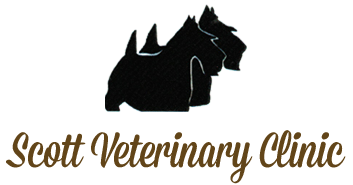Library
-
Small exotic mammals are well known for hiding symptoms of illness until late in a disease course. Yearly health examinations are essential to uncover health issues before it is too late. Blood tests, radiographs and/or fecal tests may be recommended during an annual exam.
-
This handout provides basic guidelines for feeding a pet chinchilla a healthy and balanced diet tailored to the specific needs of chinchillas.
-
Chinchillas can make fun, enjoyable pets. They can live 15-20 years, so the family must plan for a long-term commitment. They require a cage with a wheel to run in to help them maintain their health and strength. Yearly veterinary examinations are highly advised as they are very good at hiding symptoms of illness.
-
Chinchillas are generally hardy animals but can have several unique problems; understanding them will help you care for your pet and manage potential health problems.
-
The cage should allow the chinchilla to move around a lot, as they are very active, agile, and acrobatic animals. Multilevel cages, similar to those designed for ferrets, work well, as long as there are no areas where a chinchilla could get its limbs or feet caught. Most owners house one or two pets in a cage; often the two pets are mates. Chinchillas require a dust bath for normal grooming. Cages should be emptied and cleaned at least weekly with soap and water.
-
Hospitals providing curbside care have restructured their practice to avoid the need for clients to enter the lobby and exam rooms. This is designed to promote physical (social) distancing and reduce the spread of COVID-19. Curbside care offers a number of benefits for you and your pet. By eliminating the need for you to enter the hospital, potential COVID-19 outbreaks are reduced. The veterinary team is protected under a curbside care model, and in turn, so is your pet. Even in curbside care, you will have an opportunity to speak with your veterinarian in order to discuss findings and recommendations. To help the curbside appointment go smoothly, bring a written list of concerns or fill in any forms your practice has sent to you prior to the appointment. Curbside care truly is in the best interests of you and your pet.
-
Your veterinarian wants to keep your pet healthy and the fact is that people who are better informed take better care of their pets. Do not be overwhelmed by “medicalese”. Try your best to understand this foreign language and if you cannot quite decipher it, ask your veterinarian to speak more plainly.
-
Ferrets are true carnivores and cannot handle a diet containing more than 4% fiber. There are several good commercial ferret foods available that are dry foods. Ferrets have a very quick gut transit time (the time from eating to defecating) of three to four hours, so they appear to eat and defecate constantly. Fresh water should be available all the time.
-
The preferred basic diet for guinea pigs is unlimited amounts of Timothy or other low-calcium hay, supplemented with smaller amounts of a commercial, high-fiber, Timothy-hay based guinea pig pellets. The diet should be supplemented with a variety of fresh, well-washed, leafy greens or colored vegetables; especially those high in vitamin C. Guinea pigs cannot manufacture their own vitamin C, therefore it is important that guinea pigs receive a vitamin C tablet or liquid vitamin C directly by mouth every day. Provide fresh clean water in a sipper bottle and check the tube for blockages each day.
-
All pet rodents must be fed a good, high quality rodent chow available at pet stores. Many veterinarians also recommend offering hay and fresh vegetables to rodents to encourage chewing and the wearing down of their continuously growing teeth. Diets containing seeds and nuts are not recommended, as they are high in fat and low in nutrition. You can also feed your rodent fresh, well-cleaned vegetables daily and occasionally give a bit of fruit. Guinea pigs should be fed a commercial high-fiber guinea pig pellet with added vitamin C.

